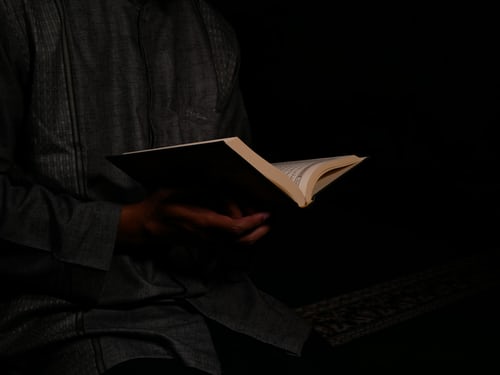Inspiring Older Readers
 posted on 21 Apr 2017
posted on 21 Apr 2017
A Train in Winter: A Story of Resistance, Friendship and Survival by Caroline Moorehead
I have returned
from a world beyond knowledge
and now must unlearn
for otherwise I clearly see
I can no longer live
– Charlotte Delbo, survivor
“It’s hard for the normal human mind to recognise the unthinkable.”
– Adelaide Hautval, survivor
When I reviewed Laura Cummings’ The Vanishing Man: In Pursuit of Velazquez I said that I thought we were living in a golden age for non-fiction writing. What I failed to emphasise is the part that women writers are playing in this. Caroline Moorehead is yet another woman producing groundbreaking non-fiction. As well as books about slavery, terrorism, pacifism and human rights, she has also written six biographies – of which her life of Martha Gellhorn, to single out just one example, is a masterpiece of biographical writing.
More recently she has begun to explore the role of women in the French Resistance. A Train in Winter: A Story of Resistance, Friendship and Survival reconstructs the stories of 230 women of the French Resistance whose indomitable courage and determination to resist saw them arrested, in many cases tortured, and eventually sent to Auschwitz where all but forty-nine met their deaths. In 2008 a tiny handful of the women who survived – mostly in their 90s – were still alive and wherever possible Moorehead interviewed them extensively.
Part 1 of the book considers the part played by specific women but also examines the birth and development of the Resistance, the role of the French Communist Party, the practical aspects of the Nazi occupation and – perhaps most importantly – French collaboration. It is especially revealing regarding the collaboration of the French police and the Special Brigades established specifically to eradicate what the collaborationist mind saw as ‘militant communism’ and ‘terrorism’. Part 2 focuses more closely on the women in the run-up to and after deportation.
As the occupation progressed and resistance intensified, the French police came to regard women as les militants techniques – the technicians of the Resistance movement – realising that in addition to collecting and distributing food, providing safe houses and hiding Jewish families, they were also serving in vast numbers as couriers, writers, editors, translators, liaison officers, printers and distributors. Some even repaired radios and electrical equipment; others manufactured explosives or procured the necessary chemicals. Their efforts were essential in making armed resistance possible. And any one of these activities was sufficient to ensure that if caught they would be beaten, possibly tortured, certainly imprisoned, and in many cases sent east to one of the Reich’s extermination camps. Nor was age a barrier. The youngest of the women Moorehead considers was barely seventeen, the oldest sixty-seven.
The accounts of imprisonment and torture are not for the faint-hearted. Many resisters were first tortured by the French police or Special Brigades and then handed over to the Gestapo; many women – and even more men – were often passed from interrogator to interrogator for weeks on end, especially if they proved hard to break. The many prisons where they were kept – often facilities shared between the French police and the Gestapo – became known as les chateaux de la morte lente, the castles of slow death. The commissioner of police in Bordeaux, the notorious collaborator Pierre Poinsot, was such a brutal torturer that his men became known as les brigades des tueurs – the brigades of killers – and interrogatoire prolongée in their hands was universally dreaded by the underground resistance.
What this magnificent book does is give one a feeling for the lived experience of the French occupation and resistance – the gradual gearing up of the police Special Brigades responsible for breaking the resistance networks, the daily cat-and-mouse existence of the resisters, and the shame and inhumanity of French collaboration. One begins to understand why the punishment of collaborators which followed the liberation – the épuration sauvage – was sometimes so merciless and further ruptured French society.
It is impossible to read A Train in Winter without asking oneself some of the most basic – but appalling – questions. If torture and death were certain, would I have the courage to resist? To what extent would I have avoided collaboration? Could one oppose the most inhuman treatment of neighbours and friends knowing that intervention would be an almost certain death sentence?
After the war France created two categories offering official recognition to resisters. ‘Political resisters’ were the higher group and received greater benefits, pensions and so forth, depending on their health or disability. Of the 40,760 political resisters who came home from the camps, 8,872 were women. The Compagnons de la Libération – France’s highest honour – was awarded to 1,053 resisters – and yet of these only six were women. France, Moorehead says, was a country of united resisters betrayed by a tiny handful of traitors – or so de Gaulle wanted the world to believe. And in keeping with this image “resisters were portrayed in the public eye as armed men, carrying out acts of sabotage or engaging in combat”. Anything else was not quite “heroic enough”.
Even alongside such magisterial works as Paris After the Liberation: 1944-1949 by Antony Beevor and Artemis Cooper, Moorehead offers astonishing new insights into Occupation-era France. The fundamental questions of conscience, guilt, complicity and action that came to dominate literature and philosophy of the immediate post-war period are here writ large on every page. Like me you may find it difficult to keep so many different French names in your head as you read – I simply couldn’t – but this isn’t a great impediment: the narrative will sweep you along, even though you read it through tears.
Alun Severn
April 2017